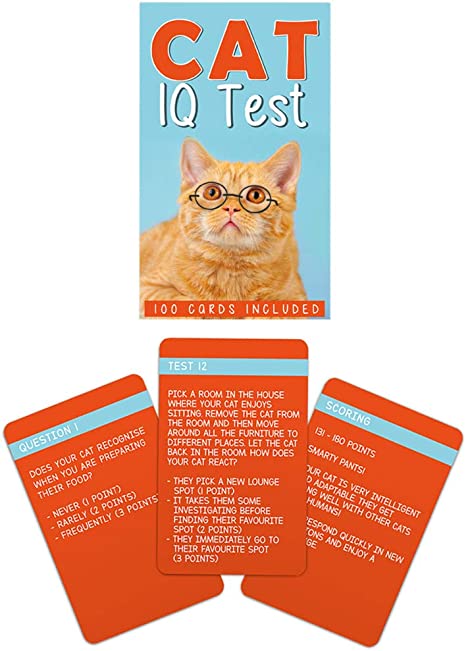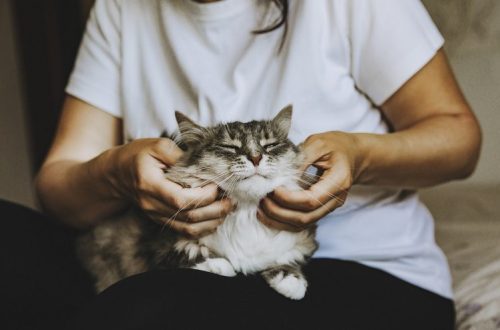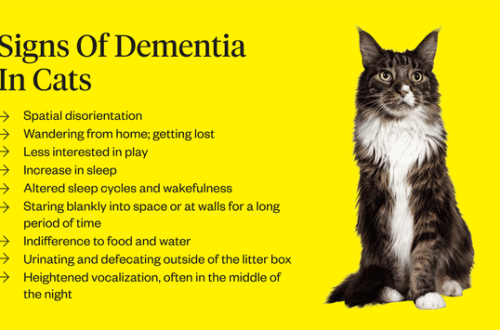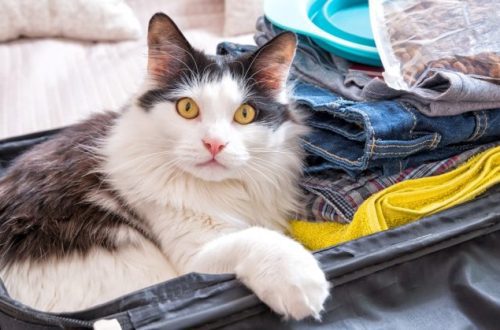
IQ test for a cat
IQ tests are very common these days. But they mostly concern people. Are there tests for cats?It turns out there is. They assess motor coordination, ability to interact (including with people), adaptability to environmental changes and socialization. We offer you a simple IQ test for a cat. To get an objective result, do not try to force the cat to act “right.” Your task is to observe the pet. You can test adult cats and kittens older than 8 weeks. To conduct an IQ test for a cat, you will need a pillow, a rope, a large plastic bag (with handles) and a mirror. So, let’s get started.
Part 1
You will have to answer the following questions: 1. Does your cat sense changes in your mood?
- Very common – 5 points
- Usually yes – 3 points
- Rarely or never – 1 point.
2. Is the cat ready to follow at least 2 commands (for example, “No” and “Come here”)?
- Very common – 5 points
- Usually yes – 3 points
- Rarely or never – 1 point.
3. Can the cat recognize your facial expression (fear, smile, expression of pain or anger)?
- Very common – 5 points
- Usually yes – 3 points
- Rarely or never – 1 point.
4. Has the cat developed its own language and uses it to tell you about its desires and feelings (scream, purr, squeak, purr)?
- Very common – 5 points
- Usually yes – 3 points
- Rarely or never – 1 point.
5. Does the cat follow a certain sequence when washing (for example, first washes the muzzle, then the back and hind legs, etc.)?
- Very common – 5 points
- Usually yes – 3 points
- Rarely or never – 1 point.
6. Does the cat associate certain events with feelings of joy or fear (for example, a trip or a visit to the vet)?
- Very common – 5 points
- Usually yes – 3 points
- Rarely or never – 1 point.
7. Does a cat have a “long” memory: does it remember places it has visited, names, and rare but favorite treats?
- Very common – 5 points
- Usually yes – 3 points
- Rarely or never – 1 point.
8. Does the cat tolerate the presence of other pets, even if they approach her closer than 1 meter?
- Very common – 5 points
- Usually yes – 3 points
- Rarely or never – 1 point.
9. Does the cat have a sense of time, for example, does she know the time of brushing, feeding, etc.?
- Very common – 5 points
- Usually yes – 3 points
- Rarely or never – 1 point.
10. Does the cat use the same paw to wash certain areas of the muzzle (for example, the left paw washes the left side of the muzzle)?
- Very common – 5 points
- Usually yes – 3 points
- Rarely or never – 1 point.
Calculate points.
Part 2
Follow the directions exactly. You can repeat each task 3 times, and the best attempt is counted.1. Place a large plastic bag open. Make sure the cat sees it. Then carefully observe and record the scores. A. The cat shows curiosity, approaches the bag – 1 point B. The cat touches the bag with its paw, whiskers, nose or other part of the body – 1 point C. The cat looked into the bag – 2 points D. The cat entered the bag, but immediately left – 3 points. D. The cat entered the bag and stayed there for at least 10 seconds – 3 points.
2. Take a medium-sized pillow, twine or rope (length – 1 m). Place a pillow in front of the cat while she watches the moving rope. Then slowly pull the rope under the pillow so that it gradually disappears from one side of the pillow, but appears on the other. Calculate points. A. The cat follows the movement of the rope with its eyes – 1 point. B. The cat touches the rope with its paw – 1 point. B. The cat looks at the place of the pillow where the rope disappeared – 2 points. D. Trying to catch the end of the rope under the pillow with his paw – 2 points E. The cat lifts the pillow with his paw to see if the rope is there – 2 points. E. The cat looks at the pillow from the side where the rope will appear or has already appeared – 3 points.3. You will need a portable mirror measuring approximately 60 – 120 cm. Lean it against a wall or furniture. Put your cat in front of a mirror. Watch her, count the points. A. The cat approaches the mirror – 2 points. B. The cat notices its reflection in the mirror – 2 points. C. The cat touches or hits the mirror with its paw, plays with its reflection – 3 points.
Calculate points.
Part 3
Answer the questions based on your observation of the cat.A. The cat is well oriented in the apartment. She always finds the right window or door if something interesting happens behind them – 5 points. B. The cat releases objects from its paw in accordance with its desire or with the instructions of the owner. Never does a cat drop objects by accident – 5 pointsCalculate the total score for the 3 parts.
Part 4
If you answer positively to the questions of this task, then the following points are deducted from the total amount:
- The cat spends more time sleeping than awake – minus 2 points.
- The cat often plays with its tail – minus 1 point.
- The cat is poorly oriented in the apartment and can even get lost – minus 2 points.
Calculate the number of points received.
Cat IQ Test Results
- 82 – 88 points: your cat is a real talent
- 75 – 81 points – your cat is very smart.
- 69 – 74 points – your cat’s mental abilities are above average.
- Up to 68 points – your cat may be too smart or have such a high opinion of himself that he considers it beneath his dignity to play stupid games that bipeds consider as worthy tests.





